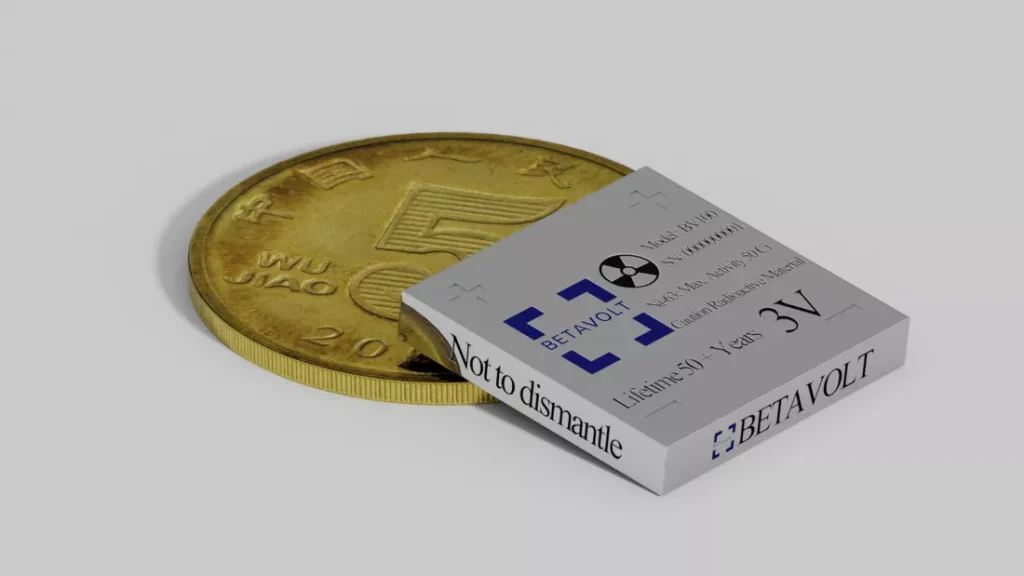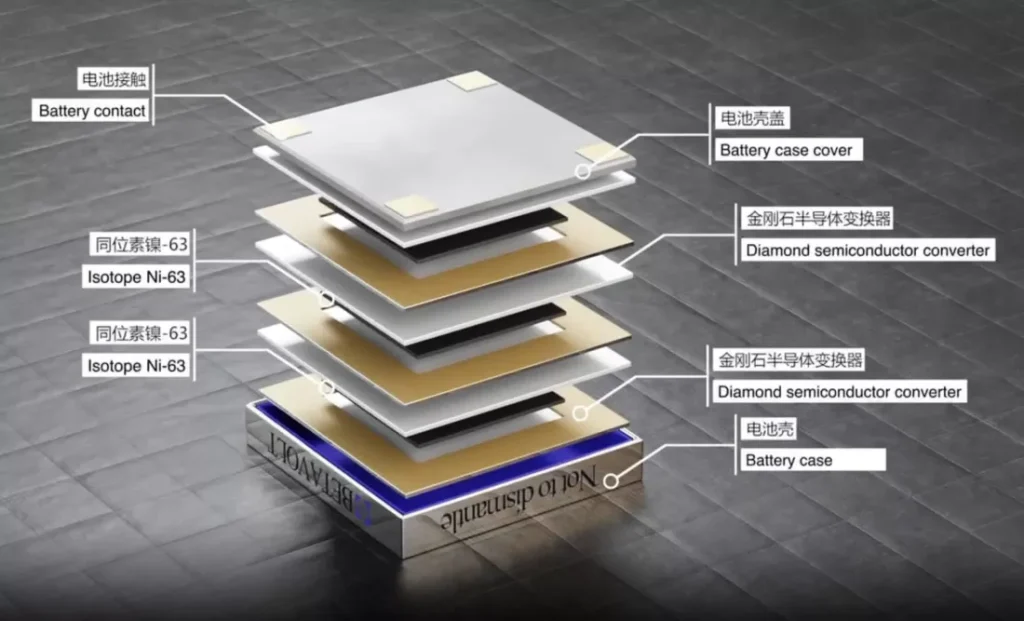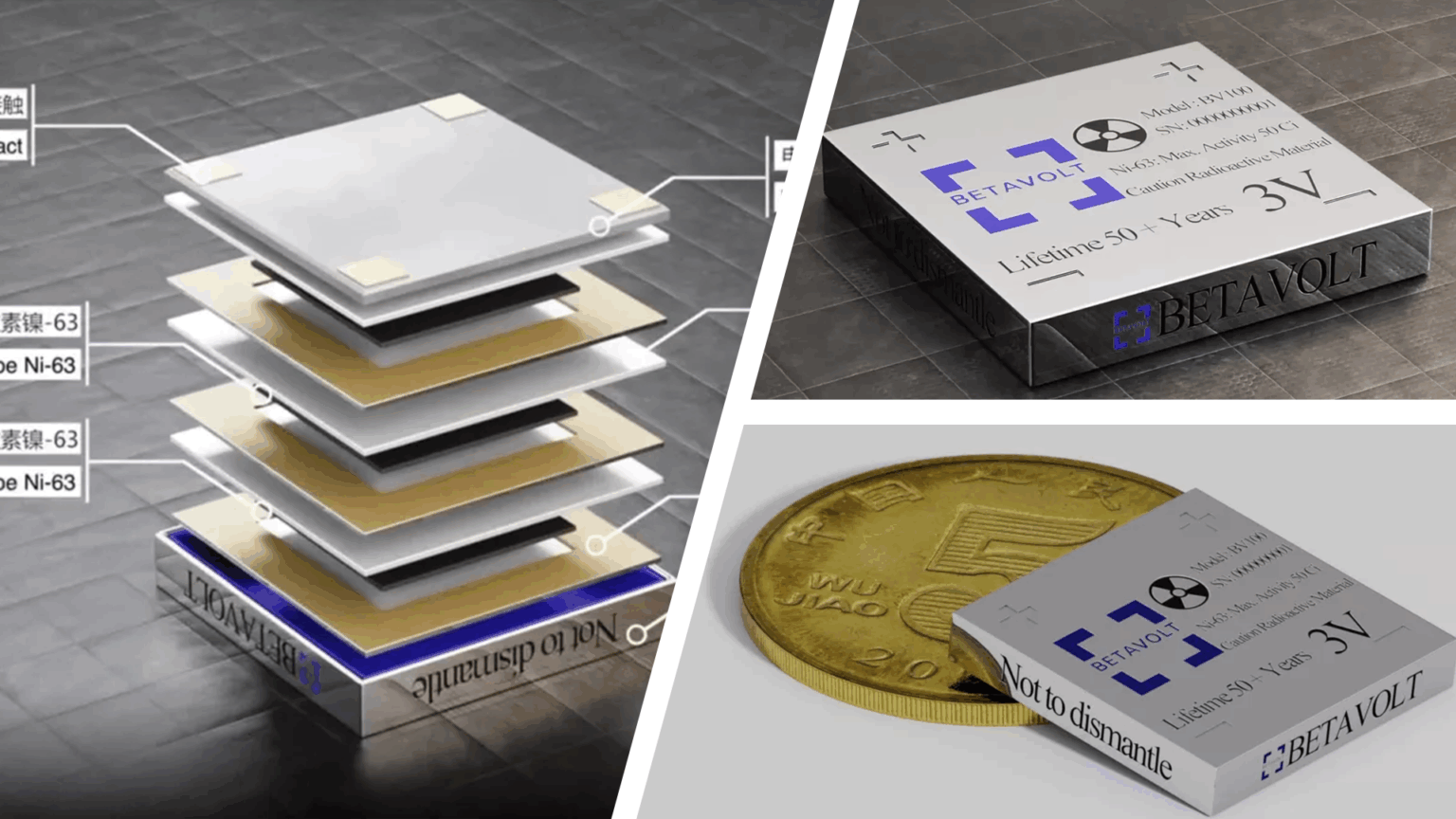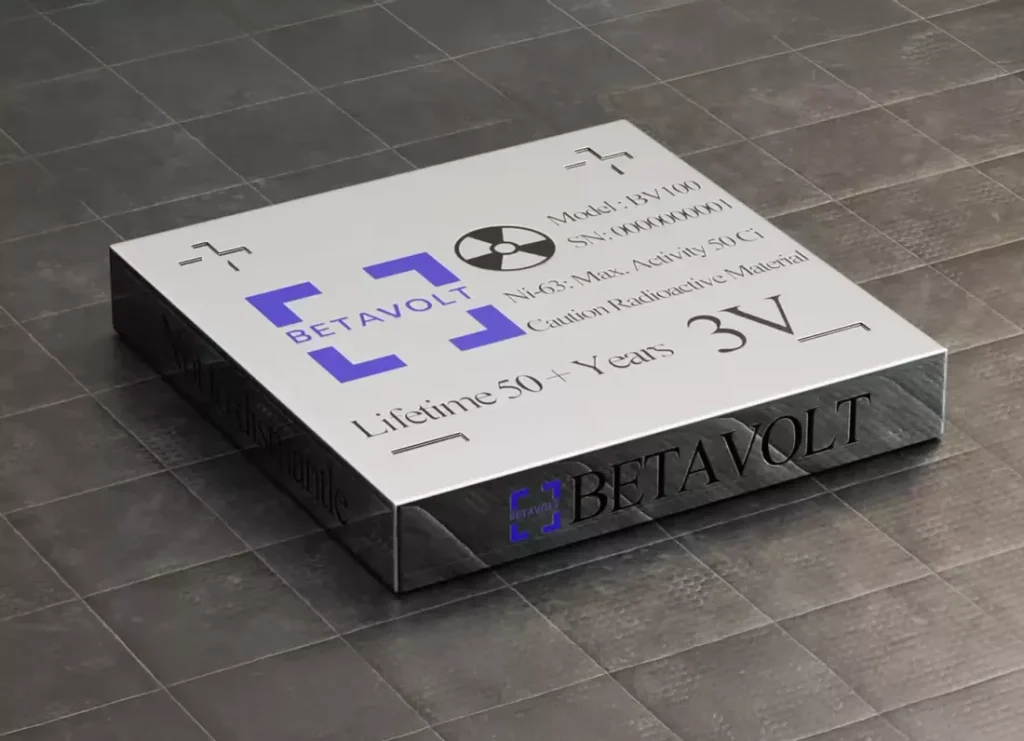China is pioneering a potential revolution in energy storage with the debut of nuclear batteries so small they are dwarfed by a coin, yet capable of operating for up to a century without requiring a recharge. This innovation promises to free mission-critical technologies from the limitations of traditional lithium-ion cells.

The New Energy Paradigm
Unlike conventional batteries that rely on chemical reactions, these new devices are betavoltaic batteries. They generate electricity by safely converting energy from radioactive decay (specifically, beta decay from isotopes) directly into an electrical current. Crucially, they are not miniature nuclear reactors; they do not use chain reactions, generate significant heat, or pose an explosion risk.

Two primary projects are leading this breakthrough:
- Betavolt’s BV100: Developed by the Beijing-based company Betavolt, this prototype uses the Nickel-63 isotope and has a projected operational lifespan of 50 years. It currently produces a low but constant power output of 100 microwatts (W), which is perfect for low-drain devices.
- Northwest Normal University’s Concept: Researchers are developing an even more ambitious design using Carbon-14 embedded within artificial diamond structures, aiming for a 100-year lifespan with zero maintenance.
Safety and Applications
The concept of a “nuclear” battery might sound concerning, but these devices are engineered for safety. The low-energy beta particles are contained by multiple protective layers (like steel or diamond), and the isotopes used (like Nickel-63) decay into stable, non-radioactive elements (like Copper-63) at the end of their life, eliminating toxic byproducts.
While they won’t power your laptop or car yet due to their low power output, their ultra-long lifespan makes them ideal for specialized, hard-to-reach applications:
- Medical Implants: Eliminating the need for repeat surgeries to replace batteries in pacemakers and neurostimulators.
- Aerospace: Providing uninterrupted power for decades to space probes and long-range missions where solar energy is insufficient.
- Remote Sensors and IoT: Powering surveillance, geological, or oceanic monitoring equipment deployed in inaccessible locations for a lifetime.
The Road Ahead
Although China is currently ahead in miniaturizing and commercializing this technology—with plans already underway for a 1-milliwatt version—challenges remain. Scaling the manufacturing of isotopes like Nickel-63 is complex and costly, and the industry will have to navigate global regulatory hurdles and public perception regarding devices with the “nuclear” label. Nevertheless, this development marks a significant step toward an energy future defined by permanence rather than recharge cycles.





